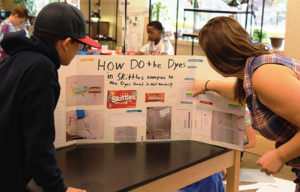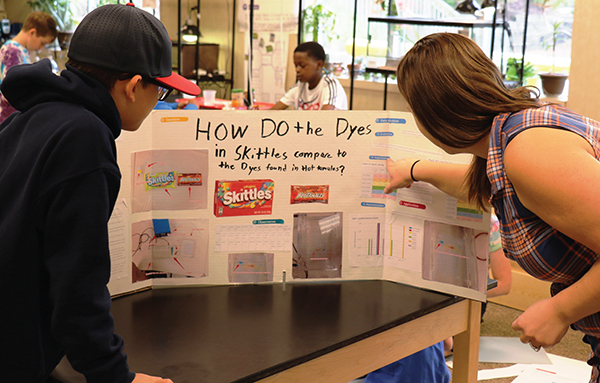 Have you ever looked—really looked—at a student’s face after you’ve offered positive feedback on their performance or behavior? I have. It’s unforgettable. In many cases, I’ve seen the pride…the sense of accomplishment…the empowerment.
Have you ever looked—really looked—at a student’s face after you’ve offered positive feedback on their performance or behavior? I have. It’s unforgettable. In many cases, I’ve seen the pride…the sense of accomplishment…the empowerment.
This “look” confirms what we teachers already know: Student feedback is an incredibly powerful way to connect with students, encourage them to develop as learners, and inspire them to become better. With just a few careful words, you can literally transform a student’s attitude—even the student who struggles the most —right on the spot.
So, why then don’t we put more effort into giving feedback? After all, research suggests giving feedback has more impact on student learning than any other instructional strategy.
The answer for many teachers boils down to time. Yes, giving feedback takes time. Yes, it requires thoughtful planning. And yes, it must be ongoing to be effective. But the payoff is immense.
Growing Students with Fast, Everyday Feedback
When it comes to feedback, are you seeking the “one” tip, strategy, or secret that will turn on motivation and accelerate learning for any student? Good luck with that!
The truth is, there is no one right way to give feedback. Feedback comes in many forms that can be effective if implemented correctly. Just make sure whatever strategy you use, it’s grounded in the basics.
A quick reminder…you want feedback to be:
- Goal-oriented. The rule of thumb is to start with one goal. Then check the student’s progress along the way.
- The goal shouldn’t leave the student wondering “huh?” Make it clear. And, have the student repeat it to you to make sure they get it.
- No fuzzy, what-am-I-supposed-to-do directions. The more concrete and specific you are, the more likely your expectations will be clear.
- This may be the most important of the basics. Give feedback in real time when the learning is fresh.
- You can never “overfeed” a student. The more feedback, the better. (Especially if there is no grade attached to it!)
- User-friendly. This is where differentiation comes in: Individual learners need individually tailored feedback.
- Set high standards and hold students accountable.
4 Ways to Motivate on the Spot
I assure you, once you get comfortable with these essential elements of feedback, you’ll see results. And you’ll want to broaden your toolbox of strategies.
Here are 4 ideas to get you thinking in the right direction:
Get techy. Don’t skip this one! They are great apps for giving feedback. Check out Flipgrid, Seesaw, and Google Docs.
Fix a sandwich—a feedback sandwich. Give a compliment, add some helpful feedback and close with another compliment. Your main idea is great. However you may need to re-arrange the middle paragraphs to make it more reader-friendly. Overall, good start!
Quick and quiet. Visit students, preferably while they are doing seat work. Inquire about their process: Tell me about what you are doing.
Attach a post-it note. No need to write on a student’s work. A more powerful approach is to pull out a sticky note and include one thing to work on, today’s date, and the date you want to see the revision.
Don’t be afraid to experiment. Give yourself permission to step out of your comfort zone, make a mistake or two, tweak, and try again. Most students will respond to feedback if they think you’re giving it because you care.
Continual improvement, one step at a time…that’s what great teaching is all about!
As always, reach out and let me know what you think!
For more information:
View the 30-minute webinar on this topic entitled: More Feedback, Please—Simple Strategies for Effective Student Feedback
Also, check out this downloadable resource within the webinar:
How to Give Effective Feedback to Your Students
Be sure to subscribe to our blog, Inquiry Insider, for more strategies and resources!

